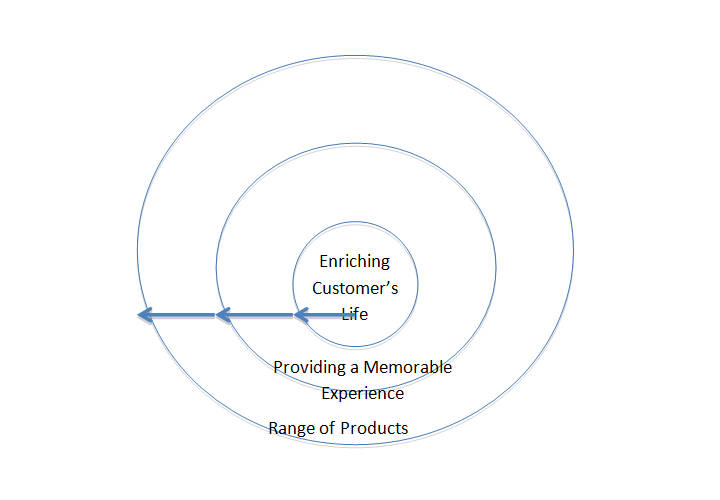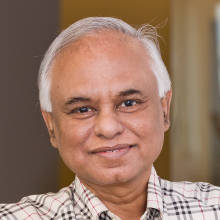How do you take business decisions? What do you do with your spare production capacity? What do you do with the expertise that resides within you and your company?
These are questions that every business faces at some point or the other.
The obvious answer would seem to be that you leverage production capacity and expertise to ensure that your revenues and profits register robust growth, and that your business captures additional market share and attracts new customers.
Your wish list matches with scores of companies across the world. Sadly, pursuing this strategy may be self defeating. It does not guarantee the kind of success earned by the likes of Apple, Google, Amazon, Facebook or Twitter - companies that have notched up profitable revenue growth over an extended period of time and have also won a place in the hearts of the people they serve. This twin achievement has catapulted them into the league of the world's most admired and valuable companies.
So how do such companies respond to the questions I posed earlier?
Watch a video of this episode or continue reading
Episode 4: New Rules of Business
Let me pluck Apple from the list. Before I share my insight into the Apple Way, let me ask you, what do you think is Apple's stated purpose? Maximizing profit? Maximizing return on investment (ROI) for its shareholders?
My guess is most of you would tick both boxes.
It may surprise you to know that although Apple's financial numbers exhibit robust health, the pursuit of reckless profit is not its raison d'être.
In Apple's chief executive Tim Cook's words, as quoted in the Financial Times: "In creating these great products we focus on enriching people's lives - a higher cause for the product...not just making money. Making money might be a by-product, but it's not our North Star... we do things for other reasons than a profit motive … I don't think about the bloody ROI." Cook went on to issue a stern warning to people who disagreed with this style of thinking, "… if that’s a hard line for you ... then you should get out of the stock."
Apple resolutely believes that it exists not for profit motive nor for maximizing ROI. These financial metrics are merely a by-product of pursing a bigger purpose: to enrich people's lives by providing them with a memorable experience through its ever expanding range of products - iPod, iPad, iPhone, MacBook and other devices.
For starters, it did not begin by saying that
-
Customers love our products.
-
Our third-party manufacturers have spare production capacities which we can hire to manufacture them.
-
There is an unmet demand for our products because many parts of the world, including India, are still not directly covered by us.
-
So let us leverage these favourable tail winds and fill up our coffers.
Instead, it stands up to bullying by activist investors and Wall Street, and is prodigiously focused on ensuring that the customers' interest - that is, enriching their lives by giving them a memorable experience - is at the heart of all its decision. Apple products are merely vehicles it has in its armoury to achieve this objective.
This unique thinking be captured in a simple business model. I have decided to label it the Inside – Outside Way of Thinking.

If you look at this simple diagram, the inner circle represents why the company exists—to enrich customer’s lives. The outermost circle represents what the company does. The middle circle is the bridge through which the company's 'inside and outside' goals are linked.
Because customers feel their interests are protected, above the company's interest, every time and at all cost, they reciprocate in equal measure by offering their business to Apple, without it having to seek it.
Now take Apple’s competitors. They too are respected and admired global companies. Do they follow a different style of thinking while launching new products?
Take for instance the smartwatch. Many companies have entered this nascent market in the past few years, with little success. How would their thinking have differed from Apple's? Maybe they thought
-
We have a sterling reputation in the market, courtesy our smartphones.
-
There is a pent up demand for smartwatches thanks to the buzz generated by Apple’s rumoured entry into this segment.
-
Chips required to manufacture it are easily available.
-
We have in-house manufacturing capabilities. If it is not suitable for smartwatches then it can be outsourced.
-
We have a global distribution system to make it available across the globe at the click of a button.
-
We have generous marketing budgets to inform customers about its availability.
-
All this will add up to customers queuing up to buy our smartwatch.
This style of thinking, as per the model shared above, represents an Outside - Inside Way of Thinking.
What happened to the products that were launched based on this thinking?
Most brands, including Samsung Gear, have been launched, re-launched, re-re-launched multiple times. And yet they have not gained satisfactory traction in the market.
Whereas Apple Watch, scheduled for an April 2015 launch, already has customers salivating for it. It is estimated that Apple will ship 15 million watches in the first phase of the launch itself.
Why?
Because customers are convinced that Apple, true to its tradition, will protect their interest ahead of their profit and take decisions that will "enrich their lives by providing them with a memorable experience."
That's how successful businesses think. They exhibit an Inside - Outside thinking approach.
Do you want customers to salivate for your products? Then reverse your style of thinking and start thinking from the customers' point of view:
-
How will it provide solutions to their problems?
-
How will my brand improve their lives?
Once you have answered these two questions, go ahead and introduce the product. And watch customers queuing up for your product. This is a one-way street. If you transgress this law, you will have to beg your customers to try your product.
If you have a question, write in to askrajesh@foundingfuel.com.
[This article was published concurrently in Mint]




Rakhi india on Nov 16, 2017 6:52 a.m. said
I found this post very good and full of information that helps us very much, thank you for posting the information you have given and sharing with us. Hope you will continue to post full information like this Thank you.